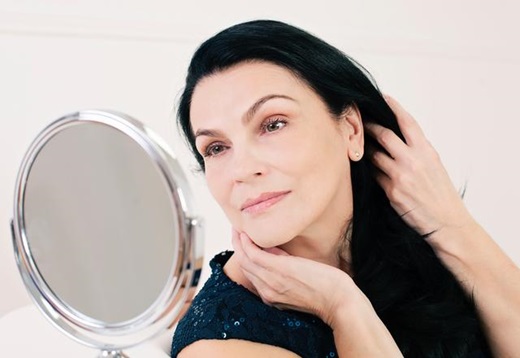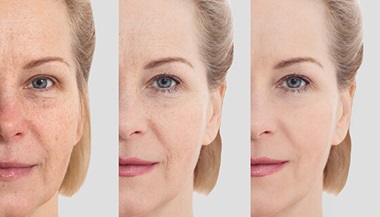Facial Rejuvenation Surgery: 5 Things You Need to Know
Reviewed By:
In recent years, cosmetic anti-aging procedures have gained mainstream acceptance. And while many women start with less invasive treatments, like injections and dermal fillers, at a certain point, some women consider facial rejuvenation surgery, or a facelift, for longer-lasting and more dramatic results.
If you are considering facial rejuvenation surgery, Lisa Ishii, M.D., a specialist at the Johns Hopkins Center for Facial Plastic and Reconstructive Surgery, shares five things you should know.

What is a facelift?
A facelift is a procedure to lift and tighten sagging skin on the face and neck. Surgeons perform the surgery in the operating room while the patient is often completely asleep under general anesthesia.
During the procedure, surgeons make small incisions around the earlobes to help hide any surgical scarring, which is minimal. They lift and pull back loose facial and neck skin and connective tissue, removing excess skin before closing the incisions. The procedure addresses problem areas, such as:
- Jowls that occur on the jawline
- Loose neck skin
- Nasolabial folds, also known as marionette lines, between the nose and mouth
- Midface drooping
- Double chin
Compared to injections that last anywhere from eight months to two years, a facelift typically lasts for several years.
How long does it take to recover?
According to Ishii, one common misconception around a facelift is recovery time. “Generally, people think recovery will be worse than it actually is,” she says. “They expect recovery to take six weeks, when in reality it only takes 10 to 14 days for most people.”
During recovery, people can expect some swelling and bruising while incisions heal. Your surgeon will provide detailed postsurgical care instructions and pain relief recommendations to speed your healing.
What are the benefits of a facelift?
Not surprisingly, the primary benefits of a facelift are increased satisfaction with your appearance and having others see you as more youthful and attractive. “People want what they feel on the inside to be reflected in the mirror,” says Ishii. “They also want to know that people around them are thinking positive thoughts about them.”
Ishii’s group has conducted new research to measure the impact of facelifts from the perspective of a casual observer. That research involved showing before-and-after photos of facelift patients to a group of nearly 500 online survey participants.
The participants estimated the age of the women in the photos and rated them according to attractiveness, perceived success and overall health. The survey results showed that casual observers saw the women who had undergone high-quality facelifts as younger, more attractive, more successful and healthier.
What are the risks and drawbacks of a facelift?
As with any surgical procedure, there are risks people should consider before heading to the operating room. General anesthesia poses a risk for some people, including older adults and people with health conditions such as obesity and diabetes.
Some people also have an increased risk of bleeding during surgery. These patients include smokers and people who take anti-clotting medications, such as warfarin.
If general anesthesia isn’t an option, Ishii says it’s possible to do the procedure under local anesthesia that numbs the facial area.
Will people be able to tell?
Some people worry that their faces will looked stretched out or that it will otherwise be obvious that they had surgery. Ishii says this shouldn’t be the case with the right surgeon. “If the surgery is performed well, the result will be natural in appearance,” she says. “Nobody will be able to tell.”
The key is to find a plastic surgeon with a track record of high-quality results. You can ask the doctor for before-and-after photos of patients so you can get a sense of the quality of their procedures. One important question to ask is whether the surgeon collects data on outcomes, specifically patient satisfaction. If a high percentage of people are extremely happy with the results after five years, you’re more likely to have a successful procedure.







